Creating pop out sections on your website can really make your content stand out. Plus, this pop out design technique can be applied to any Divi layout for countless combinations.
In this tutorial, I’ll be showing you how to use Divi’s box layout and the Divi Builder to create pop out sections and rows on your website. All it takes is a small amount of custom CSS that extends the section or row past the page container. You can then make additional adjustments and styling using the Divi Builder.
Let’s get started!
Sneak Peek
Here is an example of what you will be able to do:
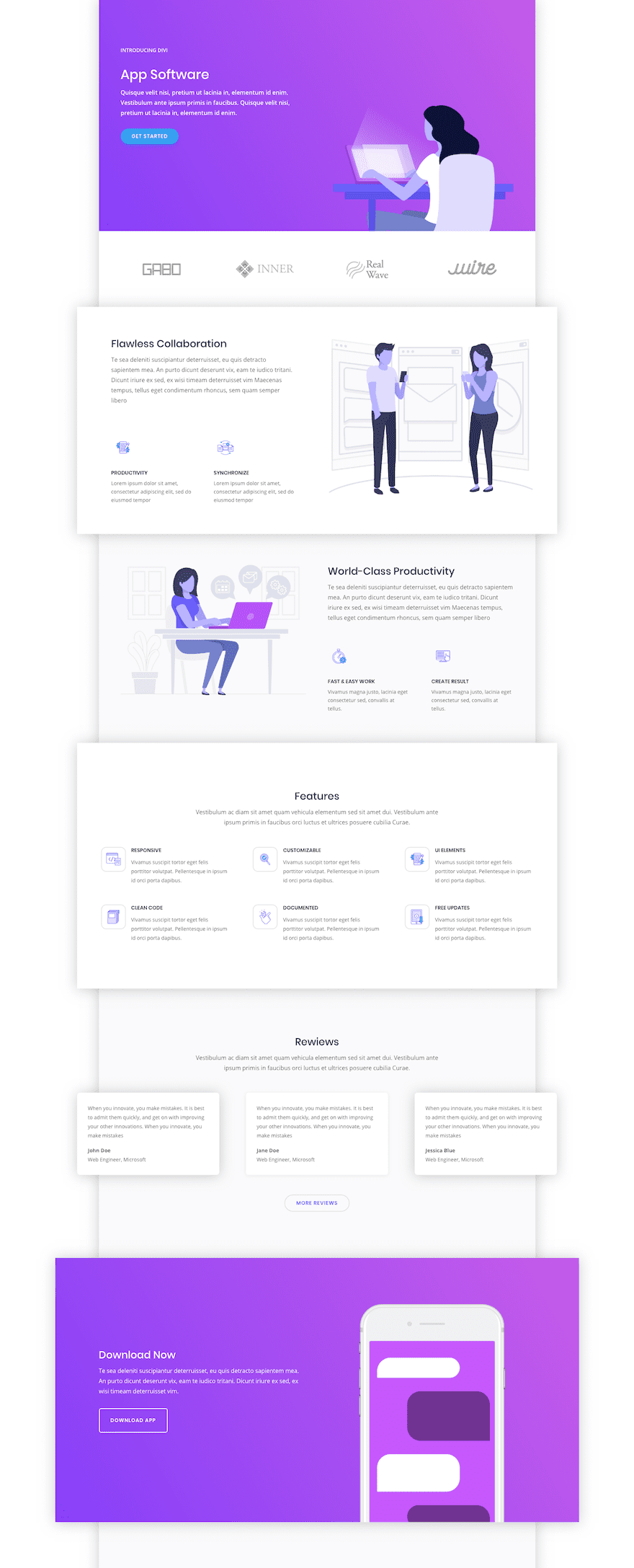
How to Create Pop Out Sections with Divi’s Boxed Layout
Subscribe To Our Youtube Channel
Upload Your Divi Layout
In order to demonstrate how this pop out works, I’m going to use Divi’s Software Marketing Landing Page layout. To use the layout, create a new page, deploy the visual builder, open the settings menu, click the add from library button, select the Software Marketing Landing Page Layout, and click the “Use This Layout” button.
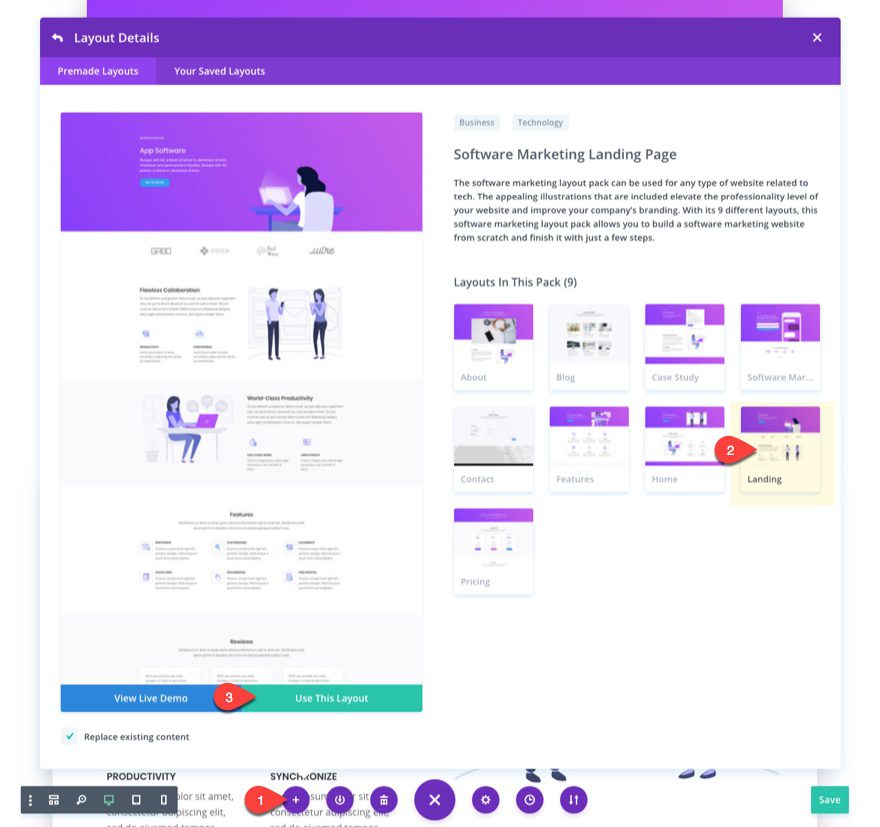
Save and Publish your page.
Enable Box Layout in Theme Customizer
The next step is to deploy Divi’s box layout. From your WordPress dashboard, navigate to Divi > Theme Customizer > General Settings > Layout Settings. Then click the check box to enable boxed layout and publish your changes.
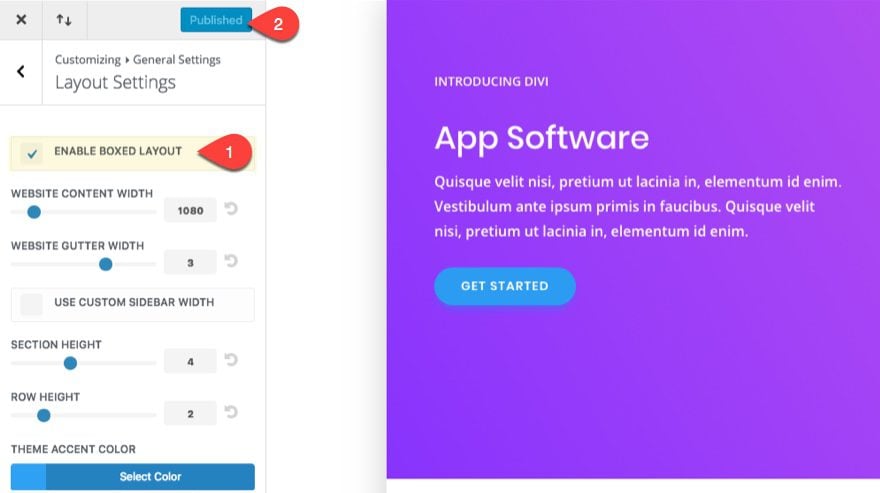
Add Custom CSS to Theme Customizer
Next on the list is adding a few snippets of custom CSS. In the Theme Customizer select Additional CSS and add the following Custom CSS in the edit field:
@media (min-width: 980px) {
/*** Adjust default box layout width and allow overflowing sections to become visible ***/
.et_boxed_layout #page-container{
overflow-y: visible !important;
width: 80%;
-webkit-box-shadow: 0px 2px 60px 0px rgba(0,0,0,0.2);
-moz-box-shadow: 0px 2px 60px 0px rgba(0,0,0,0.2);
box-shadow: 0px 2px 60px 0px rgba(0,0,0,0.2);
}
/*** custom class to increase the max width of your pop out sections ***/
.pop out-section {
width: 120% !important;
}
}
As the comments in the css suggest already, the first css snippet allows the overflowing sections to become visible using “overflow-y: visible”. I also added a shadow (box-shadow) to the box layout, but if you want to keep the default one just leave this out. There is also an adjustment to the default box layout width (or page container). I added this to allow for more “pop out” room on each side of the container. Since the width is now 80% (it was 90%), you will have 10% of margin space on each side of the container to allow for your pop out to extend.
Since we have an extra 20% of space, I created a second snippet with a CSS class (named “popout-section”) that will set the default width to 120% (20% more than 100% of the width of the container) for any row or section you add the CSS class to.
Add the CSS Class to Your Section
To add the CSS Class to your section, open the section settings and, under the advanced tab, enter “popout-section” in the CSS Class input field.
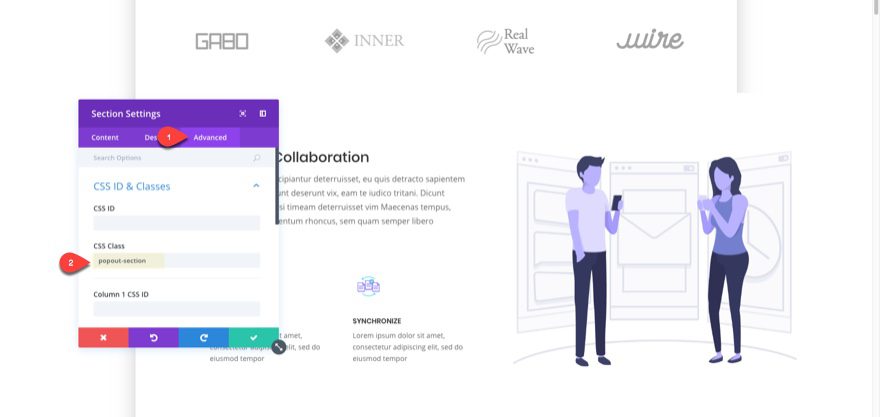
Once you add the CSS Class “popout-section” to your section, you should notice that your section has grown in width and extending past the right side of your page container. This means that your CSS is working by increasing the width of your section to 120%. I didn’t completely customize the section using Custom CSS because I thought it best to leave some room for adjustments using the Divi Builder.
Adjusting Your Pop Out Section with the Divi Builder
Now that you have a section with 120% width, you can use the Divi Builder to fine tune your pop out width and position. Open you section settings under the design tab and change the width of your section by entering the percentage value in the field. You can enter any value between 100-120%. I think 110% is a great happy medium. Enter 110% in the width field.
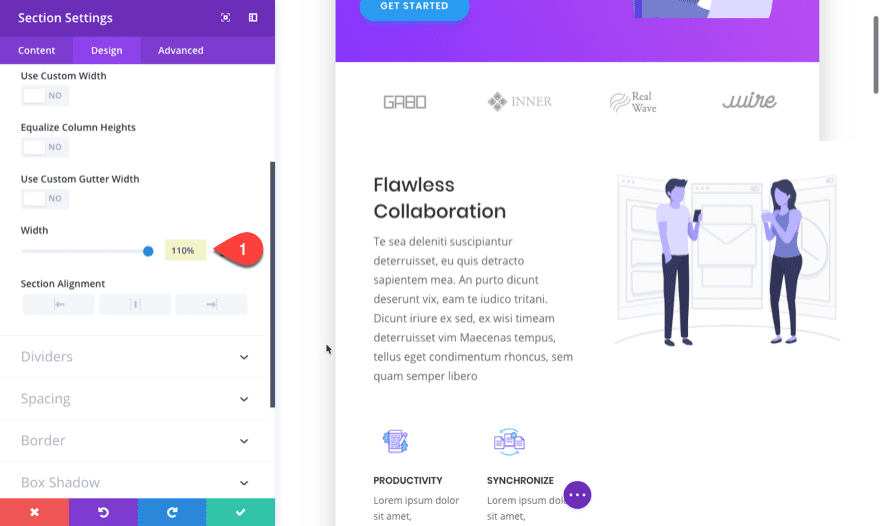
Now you need to adjust the margin to center the pop out section. Since the section is extending 10% to the right of the page container, we need to move it 5% to the left. To do this, enter a custom left margin of -5%.

If you set your width to 120%, you would need to add a left margin of -10%.
Next select the first box shadow option and give it a blur strength of 60px. And change the shadow color to rgba(0,0,0,0.2).
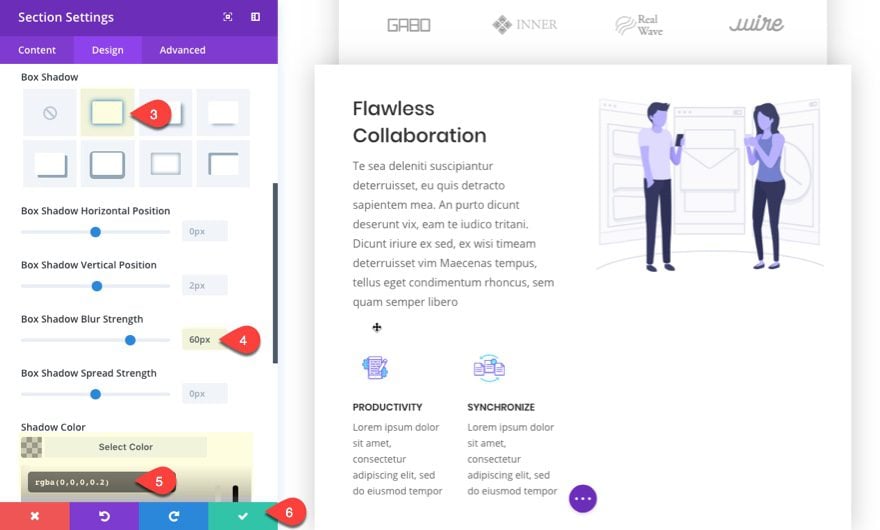
Create a Pop Out Row
To create a pop out row, you will follow the same basic process as when you create a pop out section. Add the CSS Class “popout-section” to the Row Settings under the Advanced tab. Then under the design tab, select to use custom width, select the percentage unit option, and then enter 110% for the width.
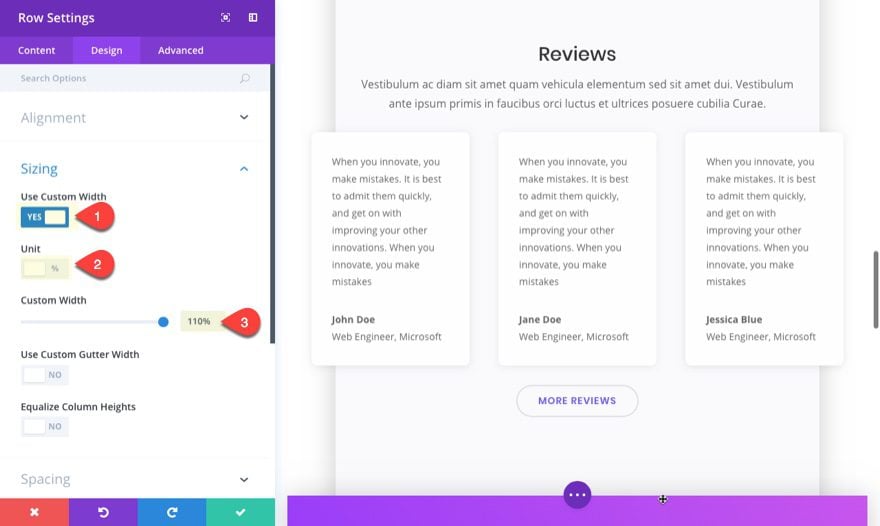
Then set a -5% left margin.
Instead of adding background color and box shadow to the row, you can choose to create the pop out effect on the modules that extend past the page container. Simply edit the module settings, add a white background color, and give it a box shadow with a blur strength of 60px and the color rgba(0,0,0,0.2).
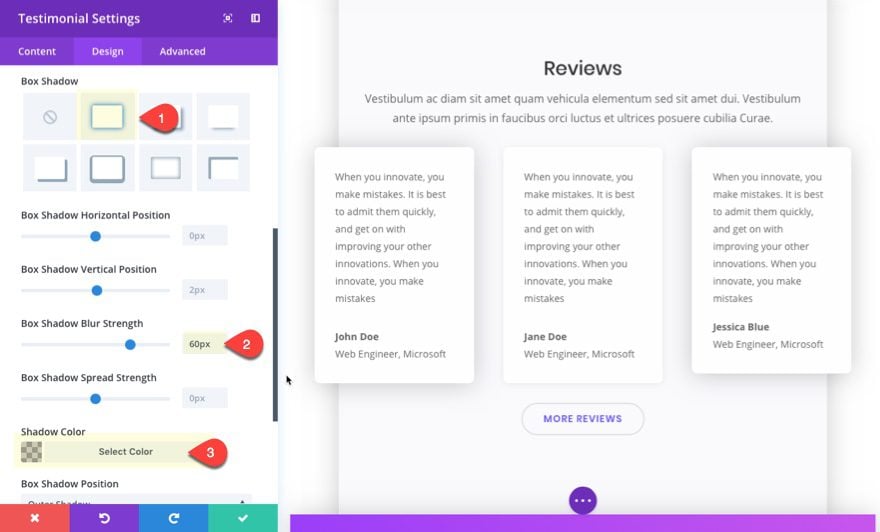
Final Thoughts
Creating pop out sections on a box layout is a unique way to set your design apart with the added bonus of making your content stand out. All it takes is a little custom CSS and you can add a CSS class to any row or section to extend it past the page container. After that, you can adjust your row or section using the Divi Builder settings. This tutorial merely introduces the design concept, but feel free to experiment with your own application of the pop out design.
Looking forward to hearing from you in the comments.
Cheers!
The post How to Create Pop Out Sections with Divi’s Boxed Layout appeared first on Elegant Themes Blog.
